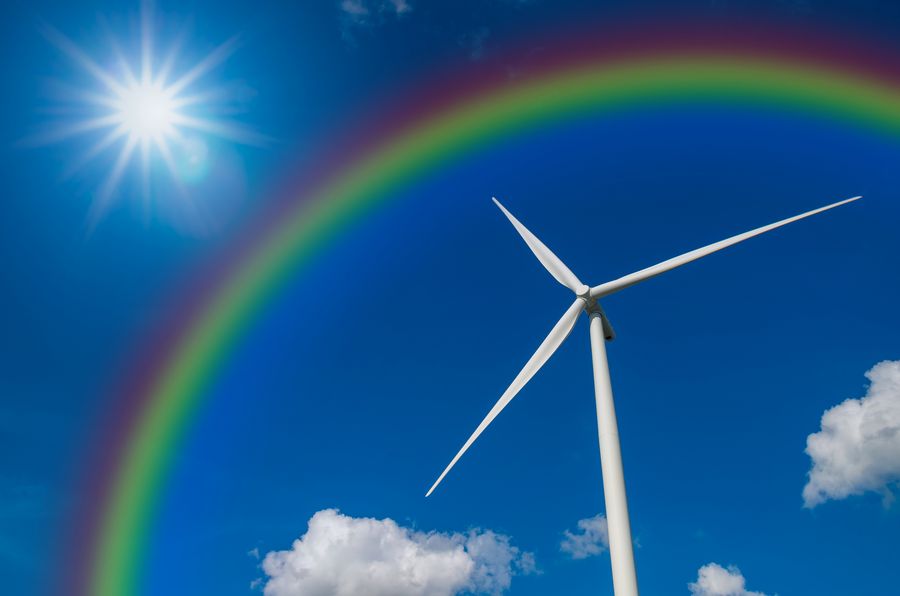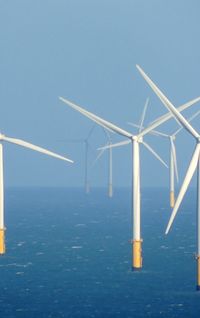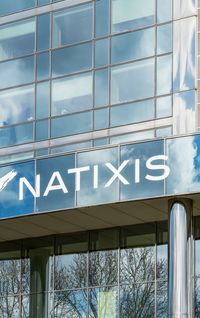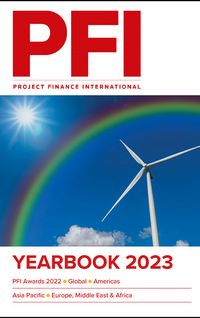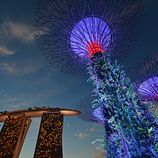Nantes-based Lhyfe has a mission: to become a green unicorn, not in terms of reaching a US$1bn valuation, but in terms of avoiding 1bn tonnes of CO2 emissions. By Nick Herbert.
Lhyfe’s mission statement is based on the premise that “the world can meet its energy needs by integrating into the natural ecosystem rather than trying to dominate it, that it can change the relationship between man and the environment by creating a new energy paradigm”.
Lhyfe is a pure hydrogen player that produces green hydrogen for mobility and industry. The company, launched in 2017 by CEO and founder Matthieu Guesné, has developed quickly since then to a position where it has subsidiaries in Germany, Denmark, the Netherlands, Sweden, Spain, and the UK, offices in Belgium, Finland, Norway, and Portugal, and as of mid-September 2022, had a workforce of 127 people.
During the first half of 2022, the company generated €0.3m in revenues from a zero-revenue generation position in the equivalent period of 2021. Ebitda for the first six months of 2022 was –€6.3m versus –€1.8m in the first half of 2021. Those numbers, along with the rapid growth in headcount 2 full-time equivalent employees more than tripled in the first six months of 2022 compared with the first half of 2021 – reflect the extent of the firm’s investment in growth and the potential returns from its projects.
Revenues for the reporting period consisted exclusively of hydrogen sales produced on the Bouin site, its first production site for renewable and ecological hydrogen, which has been producing molecules of hydrogen since September 2021.
Hydrogen rush
Lhyfe is in a hurry. It aspires to become a leader in green and renewable hydrogen production in Europe, aiming to have 55MW of installed capacity onshore by 2024, 200MW by 2026 and more than 3GW by 2030. Lhyfe also has offshore hydrogen aspirations and estimates that floating production could represent an additional installed capacity of around 3GW by 2030–2035.
“We have demonstrated that it is possible to produce hydrogen at scale and that hydrogen is bankable,” said Guesné. “Now we must scale production across Europe. That's the phase we were in.”
For the financial year ending December 31 2026, and based on a total installed capacity of 200MW, Lhyfe aims for consolidated revenues of approximately €200m, and break-even Ebitda for the group. In the long term, Lhyfe aims for an Ebitda margin of over 30%.
In 2014, Guesné, an engineer in electronics and IT, was a director at the Commissariat à l’énergie atomique et aux énergies alternatives (CEA) Tech Pays de la Loire and Brittany dedicated to marine energies. CEA is a French public research organisation that has created 40% of French patents on hydrogen technology.
“I was head of a research department focusing on renewables – batteries and hydrogen,” said Guesné, a specialist in batteries and electricity storage. “All our business partners were developing fuel cells and that gave me insight into the potential for vehicles having a similar performance and range to diesel and electric but using fuel that only emitted water.”
The problem was there was no access to green hydrogen. It wasn’t just a case of there being no green hydrogen, there was very little grey hydrogen either. Hydrogen was rare and expensive and the big energy players were still focused on their core business.
“I figured out that if we wanted a hydrogen economy, then we would need a company that is 100% focused on producing green and renewable hydrogen at scale,” he said.
To realise that ambition, several technical challenges had to be overcome. No electrolyser had ever been directly connected to an intermittent renewable energy source – a feature of renewable energy – so the project required the development of specific technological building bricks allowing direct connection, and an optimised production process sufficient to reduce the production price, and increase the competitiveness, of green hydrogen.
“The materials that were available were not really compatible with green hydrogen production connected directly to renewables,” said Guesné. “So we had to do a lot of work on the hardware and software in order to demonstrate that, despite what the literature said, producing green hydrogen was possible, you could make money out of it and contribute a positive impact to the planet.”
Signs of Lhyfe
Lhyfe’s green hydrogen is produced from a process of electrolysis of water in direct connection with the production of renewable energies. If direct connection is not possible, then green hydrogen production is synchronised with local renewable energy production, in partnership with the energy producer. For 1kg of Lhyfe hydrogen produced, less than 1kg of CO2 is emitted as opposed to between 4kg and 10kg of CO2 with network and renewable hydrogen and between 11kg and 20kg for fossil carbonaceous hydrogen.
Lhyfe announced its arrival on the hydrogen sector in early 2020, with the unveiling of its green hydrogen production solution, an €8m public and private funding round and news that is first production site was to be built in Vendee, adjacent to and powered by the Bouin wind farm.
The investor group consisted of lubrication and oil group Noria, French energy group Syndicat d’Energie de Vendee (SyDEV), French water and biogas company Ovive, and investor Ouest Croissance et Ocean Participations.
Funding enabled Lhyfe to enter the industrialisation phase of its project and increase the number of sites.
“We are the first in France to show that we can produce competitively priced renewable green hydrogen and deliver it to customers at scale,” said Guesné. “We’re already overwhelmed by green hydrogen requests.” Since then, it has secured further sources of funding, entered strategic partnerships around the world, opened its European subsidiaries and, in late 2021, produced the world’s first hundreds of kilos of renewable hydrogen produced from wind energy.
Various public and private stakeholders – the Challans-Gois Urban Community, the Region of Pays de Loire and Bpifrance – contributed €3m to co-finance the Bouin site, which was built in partnership with local operators in Vendée.
Fuelling investment
Lhyfe has raised about €184m in total since 2019, including support from the Deeptech fund of Bpifrance, which covered half of the €5.5m spent on the R&D needed to overcome the major technological challenge of producing green hydrogen. And by the time it had inaugurated production at the Bouin site, it had secured €50m in a Series A financing round to support development of around 60 projects in France and around Europe, strengthening its team and funding R&D. SWEN Capital Partners and Banque des Territoires joined the original investors in the round.
A third round of funding to support Lhyfe’s strategy for the deployment of renewable hydrogen production sites in Europe came early in 2022. New partner Andera Infra contributed €15m while existing investor Ovive (part of Les Saules group) renewed its support with a €2m investment and SFLD made its first contribution to Lhyfe’s capital reserves, to the tune of €300,000.
This was followed by a strategic €10m investment in convertible bonds from Mitsui & Co, which actively engages in a wide range of hydrogen related businesses, with bonds automatically converted to equity as part of Lyhfe’s €118m Initial Public Offering (IPO) on Euronext Paris in May.
The IPO was supported by institutional investors CDC Croissance and Amundsen Investment Management, and a commitment of €25m from Portuguese renewables company EDP Renováveis (EDPR), under a collaboration agreement to identify, develop and manage green hydrogen production projects.
The deal sees EDPR – the world’s fourth largest producer of wind electricity – supply renewable energy for Lhyfe’s hydrogen projects and they will work together on project development, equipment procurement, and research and development. EDPR will acquire up to a 50% interest in new green hydrogen projects that the partnership develops.
Products, projects and pay
Lhyfe’s Bouin site has been sized to produce approximately 300kg of renewable green hydrogen/day since the end of 2021, representing 750kW of energy – the target is 1 t/day (2.5MW) in 2024 – and is serving public and private customers in the mobility sector.
“We started with transport because in transportation we had a business case,” said Guesné. “We began with ‘captive fleets’, such as buses, trucks etc. It reflected the limited extent of our initial ambition, but it helped to build our business case, generate revenues and secure investment.”
Mobility is one of the target markets for Lhyfe, the other is industry, and it has products fit to satisfy both sectors.
“We have lighter, containerised units, that can be moved next to renewable energy sites,” said Guesné, who highlighted the Sealhyfe project in Western France as an example of a smaller unit. Sealhyfe is the world’s first offshore renewable hydrogen production prototype that will be connected to a floating wind turbine, and it has a capacity of approximately 1MW.
“For mobility projects, where you deliver hydrogen to vehicle re-fuelling stations, for instance, you tend to have multiple customers, which makes the business case reliable because you share the risk amongst lots of customers,” he said.
On the industrial scale, where you need huge quantities of hydrogen and huge electrolysers to decarbonise: “You need to be next to the customer – hydrogen is a light molecule that cannot be transported over long distances with current technology. And if you can’t build next to a renewables plant then you need to source green electricity through the grid. That’s why EDPR invested in our IPO.”
The need for scale also explains its relationship with Plug Power, a leading provider of turnkey hydrogen solutions for the global green hydrogen economy. In September, Lhyfe placed an order for ten 5MW European manufactured proton exchange membrane (PEM) electrolyser systems. It is Lhyfe’s largest electrolyser order.
For long term industrial decarbonising sites, “investment amortises over many years, so you need a contract with the customer that matches the amortisation period in order to trigger the investment”.
It is supplying green hydrogen to the Syndicat Departemental d’Energie et d’equipement de la Vendee (SyDEV) and its La Roche-sur-Yon multi-energy service station, which supports buses, household refuse collection vehicles, and service vehicles, and Lidl logistics centre, with more than 100 forklift trucks.
Upcoming onshore projects include the Grand Ouest Hydrogen Valley, which aims to produce approximately 5t/day via five production sites as it builds France’s first intra-regional network for the distribution of green hydrogen and supplies around 20 filling stations capable of supplying up to 500 hydrogen vehicles daily.
In Denmark, the target is to produce 30t/day by 2025, up to 124MW, for industrial use, such as methanol production, and mobility. It is one of the most advanced projects in Europe and has Green Deal funding from the European Union (EU).
In Germany, it is supporting Deutsche Bahn’s hydrogen train project with around 30t/year from 2024 and up to 4t/day for industrial customers and mobility in the City of Schwäbisch. It also has projects in development under way in Sweden and the Netherlands.
Pipe dreams
The firm has raised sufficient equity to deliver on its 2026 guidance.
“We are going to buy 200MW of electrolysers, and we are going to leverage the equity with subsidies and debt,” said Guesné. “These two mechanisms are available in Europe: subsidies because we have EU programmes that support hydrogen, and European banks are really strong at project financing.”
Demand for renewable projects is strong among the European banks, according to Guesné.
“They have a lot of capital to deploy. In the past they could invest billions of euros in a single oil or gas project, but now they are looking for new range of asset classes, including hydrogen,” said Guesné. “We’re more than 10 years behind solar and wind in terms of history, so gearing is lower, but it is increasing now that we are in the production phase.”
At some point, Guesné does not discount a return to the equity markets to finance its expansion plans. Those plans include taking the technology to countries in both the developed and developing world.
“Our intent is to decarbonise the world, so there will be new projects and new geographies,” said Guesné. “At some point, once we are stable, once the cost of technology has decreased, then it’s really important to decarbonise the economies in the developing world that are polluting a lot.”
In the race to net-zero, hydrogen is set to play an increasingly important role in the renewable energy mix and developments in the sector will take place at an exponential rate. Lhyfe plans to continue to grow steadily in the years to come. “But for now we are comfortable with our cash position for the guidance we’ve given and we’re focusing on organic growth,” said Guesné.
To see the digital version of this report, please click here
To purchase printed copies or a PDF of this report, please email leonie.welss@lseg.com
